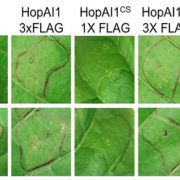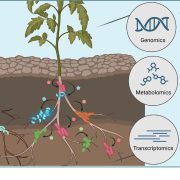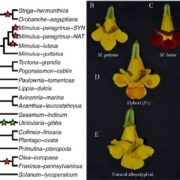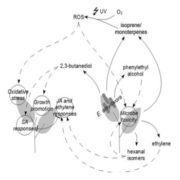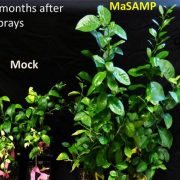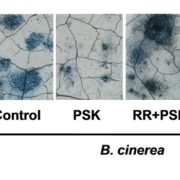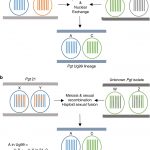Pollination of Cretaceous flowers (PNAS)
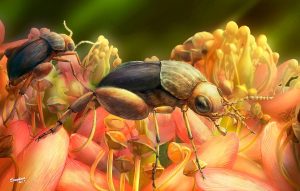 Like something from Jurassic Park, a tiny insect embedded in amber has provided new insights into life millions of years ago. But in this case, the 99 million year old insect shows us that, as Darwin surmised, insects really were important contributors to angiosperm pollination from their origins. In fact, this pollen-carrying insect (a tumbling flower beetle) pushes back the known date for insect pollination of angiosperms by 50 million years (previously, only insect pollination of gymnosperms was known from this time). By using X-ray microcomputed tomography (micro-CT) and confocal microscopy, Bao et al. show that the amber-preserved beetle has pollen-carrying hairs, and a body shape and mouth parts that are consistent with pollination. Their key finding is that it is carrying tricolpate (three-grooved) pollen typical of eudicots, truly a validating insects’ contribution in early angiosperm success. (Summary by Mary Williams) Proc. Natl. Acad. Sci. USA 10.1073/pnas.1916186116
Like something from Jurassic Park, a tiny insect embedded in amber has provided new insights into life millions of years ago. But in this case, the 99 million year old insect shows us that, as Darwin surmised, insects really were important contributors to angiosperm pollination from their origins. In fact, this pollen-carrying insect (a tumbling flower beetle) pushes back the known date for insect pollination of angiosperms by 50 million years (previously, only insect pollination of gymnosperms was known from this time). By using X-ray microcomputed tomography (micro-CT) and confocal microscopy, Bao et al. show that the amber-preserved beetle has pollen-carrying hairs, and a body shape and mouth parts that are consistent with pollination. Their key finding is that it is carrying tricolpate (three-grooved) pollen typical of eudicots, truly a validating insects’ contribution in early angiosperm success. (Summary by Mary Williams) Proc. Natl. Acad. Sci. USA 10.1073/pnas.1916186116


